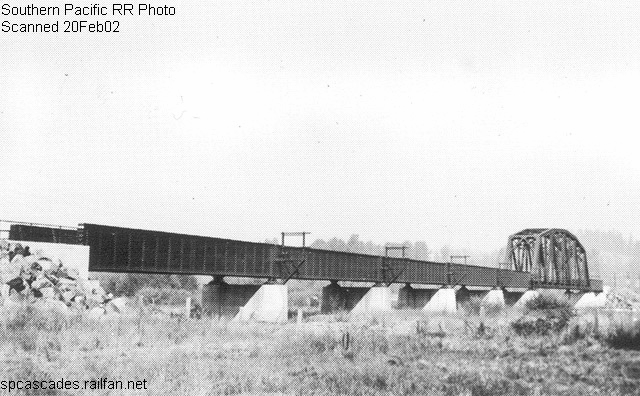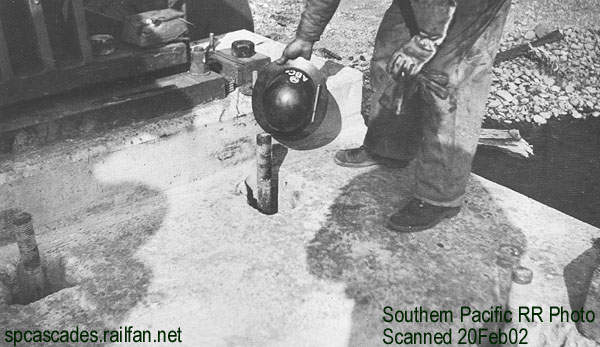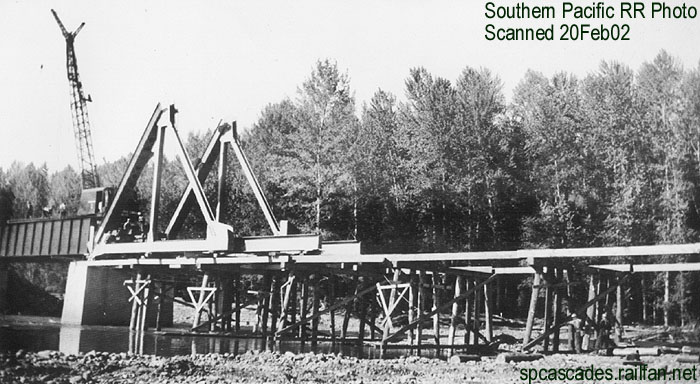| MP 611.30 |

At Milepost 611.30, the new mainline crosses the Willamette River. This location is between Fall
Creek Jct. and Dougren.
Beginning in 1950, construction began on the bridge Crossing the Willamette. The distance between abutment faces is 779'-5", and consists of 7 Spans. Here is how the spans line up from railroad east, (Eugene end,) to railroad west, (San Francisco end):
span #1 - 90' Through Plate Girder,
span #2 - 250' Through Truss Span,
span #3 - 90' Through Plate Girder,
span #4 - 90' Through Plate Girder,
span #5 - 80' Through Plate Girder,
span #6 - 80' Through Plate Girder,
span #7 - 80' Through Plate Girder,

Upstream view of completed bridge
 |
 |
 |
Erecting the bridge began on the east end, and steel for the bridge was unloaded at MP 612, (Fall Creek Junction). A spur was built off of the mainline, and named Government Spur. From here, the steel was unloaded from rail cars and then trucked to the job site. The first span was completed on August 23, 1950, then all of the equipment was moved to the west end of the bridge.
 |
 |
 |
Anchor bolts between Pier 1 and Pier 2 were 3-9/16" too far apart. This required removal of the concrete around the anchor bolts for a depth of 2 feet. The bolts were then bent over to the correct location. Steel for the 5 remaining Through Plate Girder spans was unloaded at Goshen, then trucked to the job site. The 5 spans were completed on October 27, 1950. Upon completion of these spans, work began on the 250' Through Truss Span. Erecting the Trusses was done on the east end of the bridge.

While contruction of the trusses was carried out, falsework for the floor trusses was built across
the river using wood piling penetrating 14' into the riverbed. This falsework was needed to build
the floor system of the 250' span, and later, the chords and remaining steel work were added. Once
the span was completed, the falsework would be removed.
 |
 |
 |
During October 28, 1950, a week long storm dumped over 7 inches of rain. The resulting high water washed away the falsework, causing the 250' Through Truss Span to fall in to the river. Four bents were destroyed, leaving the remaining chords hanging with a 4' to 5' sag. After the remaining bents washed out, the entire span dropped and came to rest 20' downstream. Approximately 325 tons of steel were washed into the river.

Rebuilt span after flooding.

Final construction and painting of the bridge was completed on July 10, 1951
© Joel Ashcroft
